Discover 159 years of Mass. State Police history in Northbridge museum
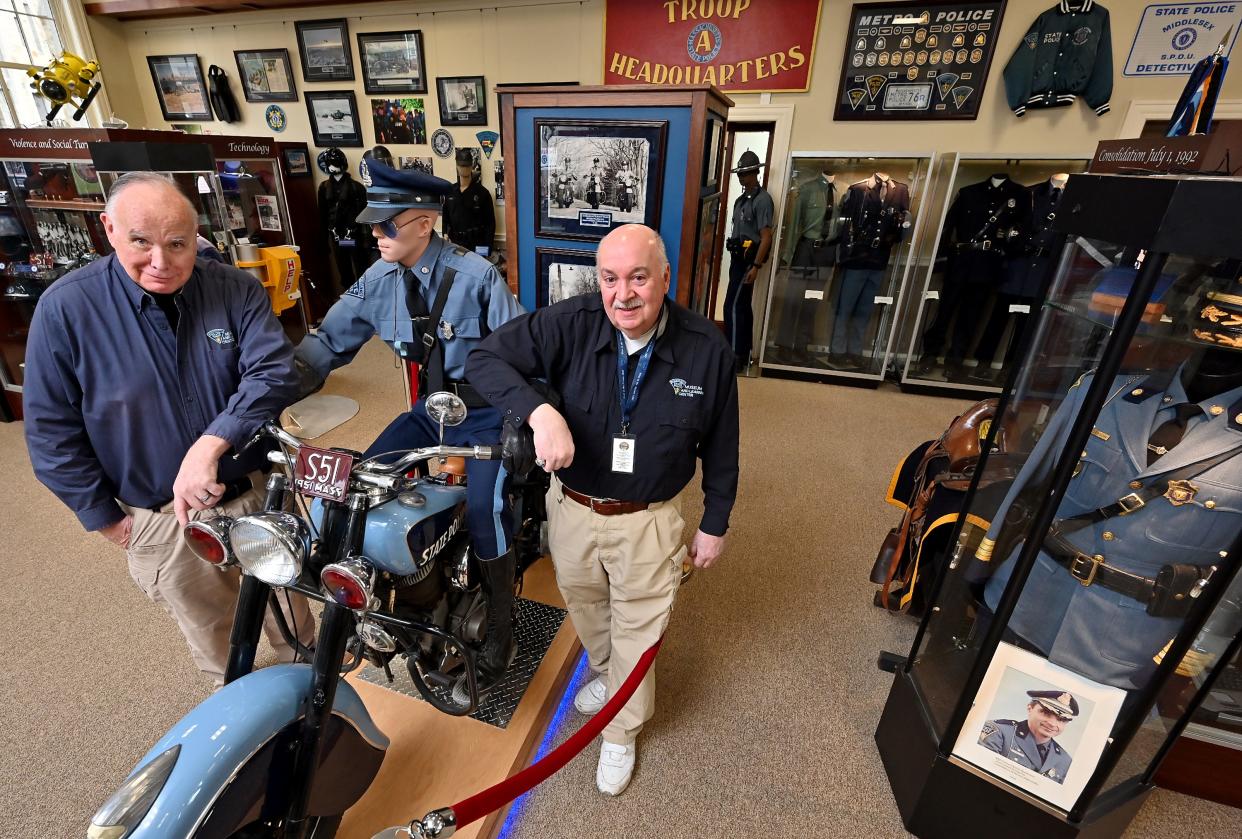
NORTHBRIDGE ― The Massachusetts State Police Museum and Learning Center wants the community to know that it exists.
Housed in the Whitinsville Bank Building at 1 Memorial Square (at the intersection of Main and Hill streets), the museum provides visitors an opportunity to explore the state police agency’s past as well as learn about current law enforcement methods and public safety efforts.
The museum originally opened in the summer of 2014, in Grafton. It moved to the Whitinsville section of Northbridge in the fall of 2021, during the height of COVID. Now, the volunteers that run this nonprofit museum want to get the word out that they are here.
As you walk Inside the 6,000-square-foot display space within the 100-year-old building, you are welcomed by a life-size mannequin wearing full state trooper regalia.
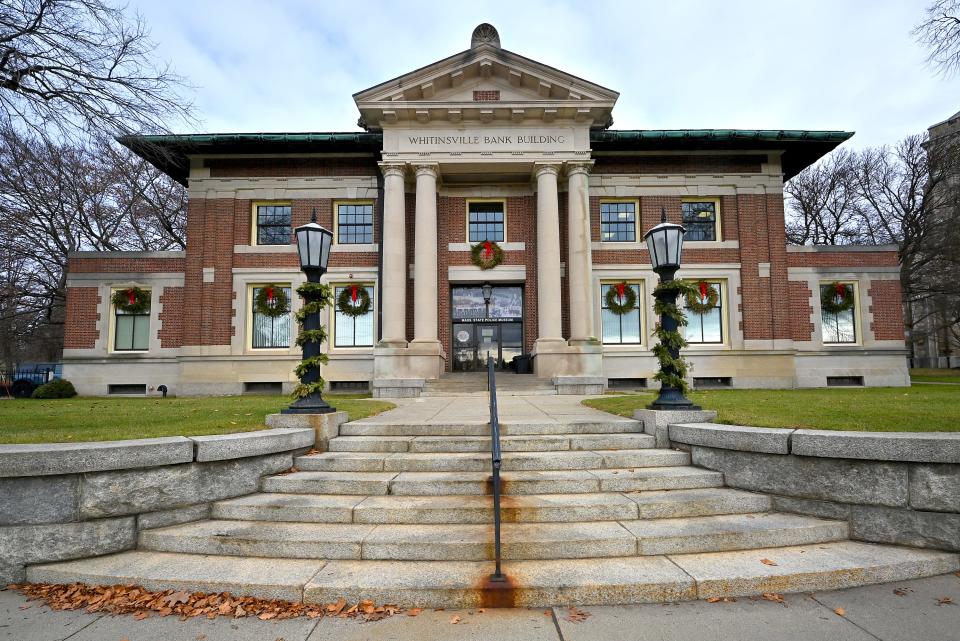
Representing 159 years of law enforcement history, the museum offers an easy tour through the history of the Massachusetts State Police, from its humble beginnings as the state constabulary that enforced Prohibition, weights and measures, and child labor laws from its inception in 1865 up through the modern era of cybercrime, homeland security and keeping the peace.
Stephen F. Byron, museum president, and Paul Landry, museum volunteer and historian, gave the Telegram & Gazette a tour Thursday, which coincidently happened to be the 74th anniversary of the on-duty death of Patrolman Alfred A. Hewett in Saugus. (In 1950, at the time of his death, a trooper was referred to as a patrolman.)
Byron and Landry were both fellow cadets of the 58th Recruit Training Troop when Massachusetts State Trooper George L. Hanna Jr. was shot and killed while on duty Feb. 26, 1983, in Auburn.
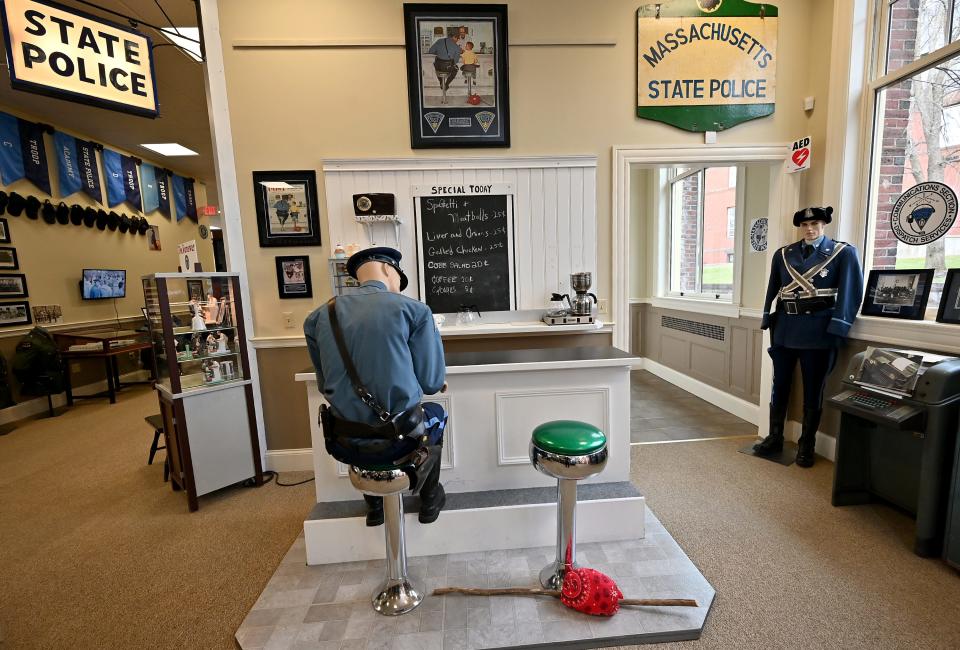
“The museum preserves the history and tradition of the Massachusetts State Police,” Byron said
"It humanizes the state police. We get a family in here and they see that we're not all yelling and screaming," Landry added.
"Stormtroopers," Byron interjected.
"We interact with the kids. The kids love it," Landry continued. "We want people to understand that we're not the enemy here. And, most of them are awed when they leave. They're really impressed with what we have."
The two retired troopers explained that the Massachusetts State Police started as the state constabulary from 1865 to 1875, continued as the state detective force from 1875 to 1879 and the district police after that.
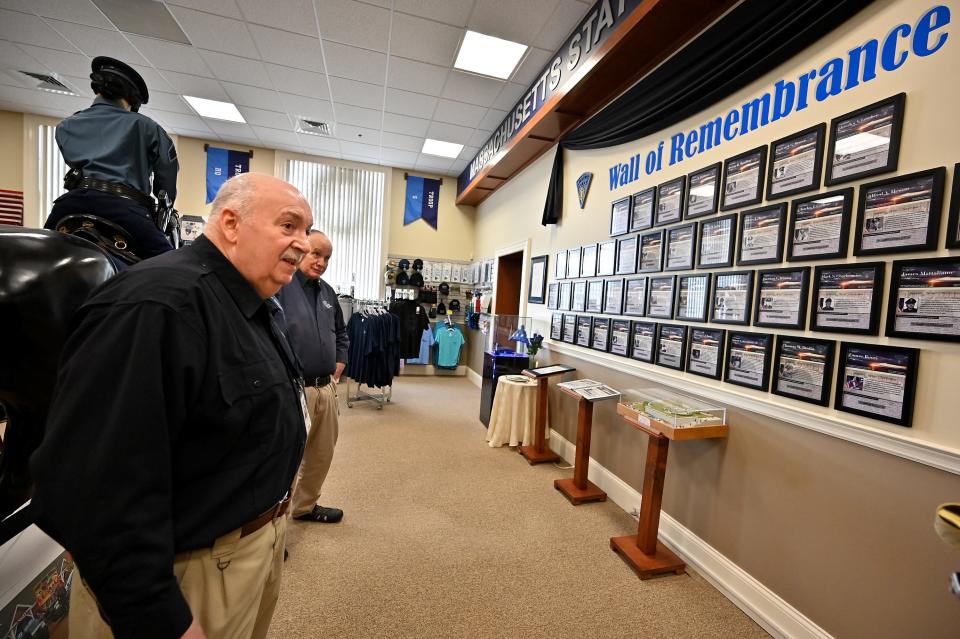
The pen used in 1921 by Gov. Calvin Coolidge to sign the paperwork creating the state patrol, which evolved into the state police, is proudly displayed in the museum, alongside a sign farmers would post to indicate their chickens had been tattooed with the assistance of state police. The state police supplied the tattoo machines to farmers to mark chickens during the Great Depression, to discourage them being stolen by hungry thieves.
The museum’s exhibition begins with the “Wall of Remembrance,” which features photographs and mini-biographies of all the Massachusetts State Troopers who have died in the line of duty including Hanna.
Prominently displayed on the wall of honor are Patrolman William Mateer, who died on-duty Jan. 10, 1909, in Canton and is the first on-duty state police casualty, and Trooper Tamar A. Bucci, who died March 3, 2022, in Stoneham and is the most recent on-duty trooper death.
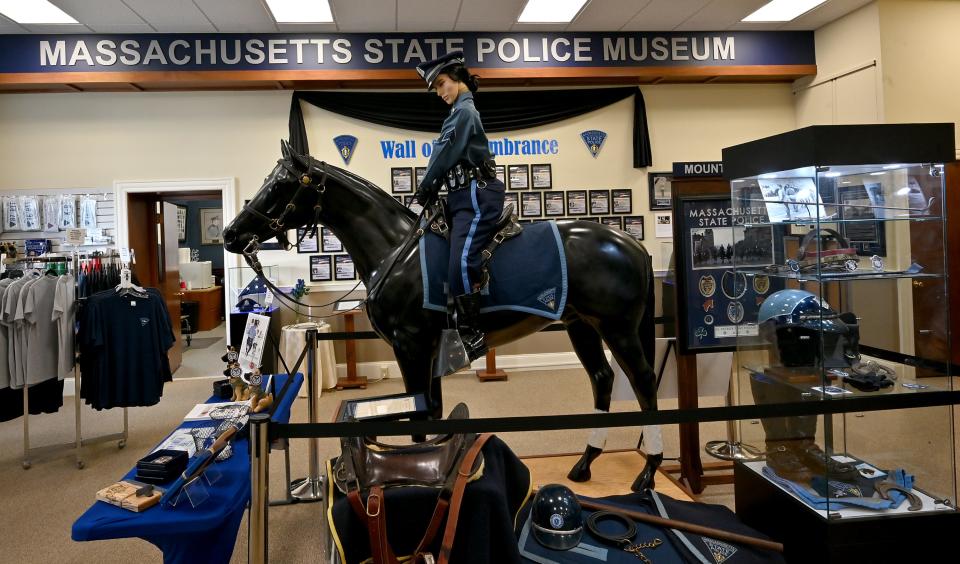
Also proudly displayed with the fallen troopers is the Massachusetts State Police K-9 Frankie, who was fatally shot on-duty July 26, 2022, in Fitchburg.
“The kids love the Frankie doll (which are sold in the museum’s gift shop),” Landry said. “We’ve sold a lot of those and part of the proceeds go to the Vested Interest in K9s program.”
A booklet in the museum lists every trooper who has served with the state police, from the earliest times up to the present. It is constantly being updated as new recruit training classes graduate from the State Police Academy and are assigned to barracks around the state.
Hervey P. Cote, a retired Westford police lieutenant, is director of exhibits for museum. He is also one of several experts on state police history.
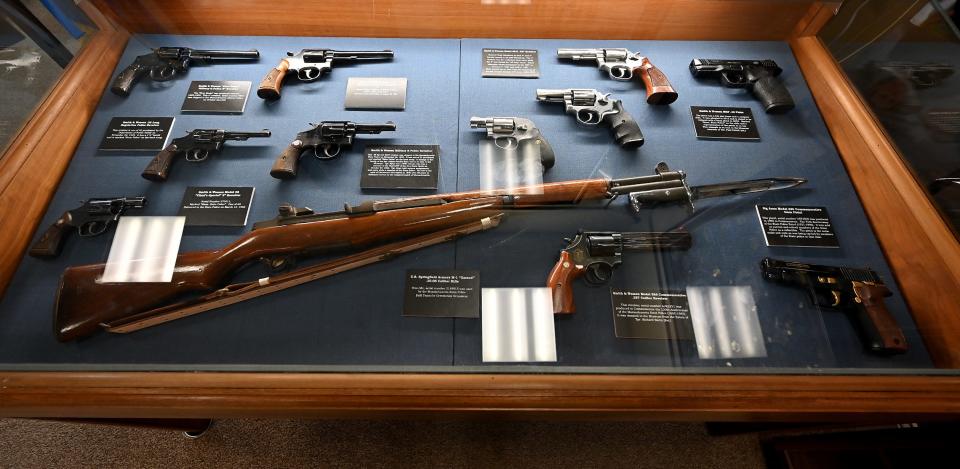
An authentic wanted poster for Wilbur R. Slocum, who was wanted for breaking and entering and larceny, is also featured. Underneath his dapper-looking, black-and-white portrait is a description that includes “sandy mustache cut even with lip; eyes, yellowish blue; wart on each eyelid, red color; false upper teeth, filled with gold to give them a natural appearance.”
There’s a shrine to the state police patrol boat “Protector,” designed in Boston, built in Essex with engine by Bessemer Gas and Oil Engine Co. in Grove City, Pennsylvania, in 1924. The shrine includes photos and the actual steering wheel of the sea vessel.
The museum also has a 1951 Indian motorcycle once used by the state police before it went into private hands. It has been repainted with state police colors.
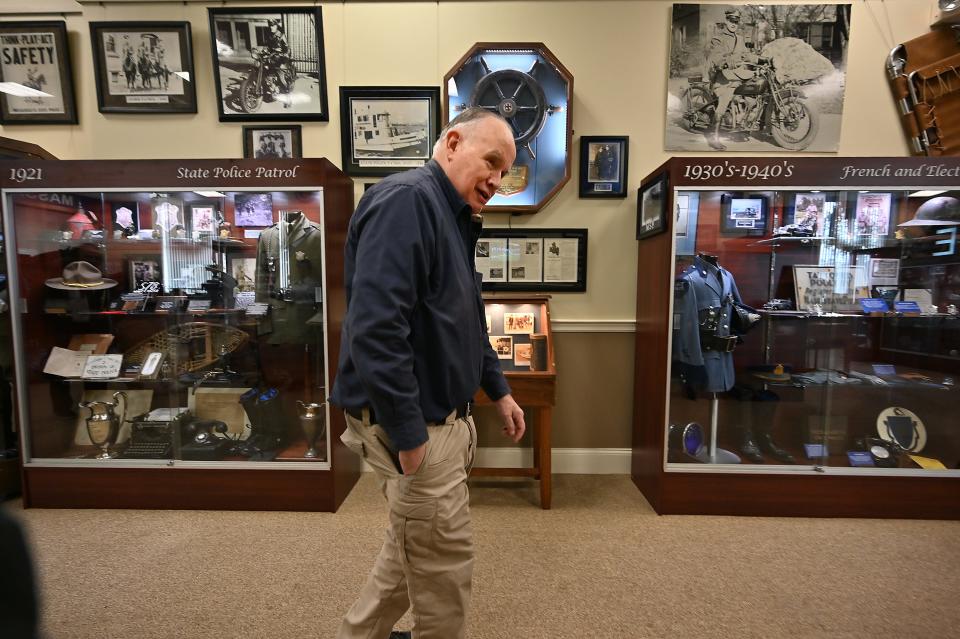
One of the most popular displays is dedicated to “The Runaway,” one of the most famous Norman Rockwell paintings to ever grace “The Saturday Evening Post.” Published Sept. 20, 1958, the popular cover art features Massachusetts State Trooper Richard Clemens and adolescent Ed Locke sitting at the counter of a Howard Johnson’s restaurant in Pittsfield.
Over the years, the painting has become synonymous with law enforcement. In December, the grown-up Locke visited the museum, Landry said.
The Civil War-era federal junior officer’s “frock coat,” which was the style worn by original members of the state constabulary, is proudly displayed next to a portrait of William Sterling King, first chief constable of the commonwealth, and a commemorative coin with the face of Samuel Judson Fletcher, state constable from 1867 to 1874, who was from Northbridge.
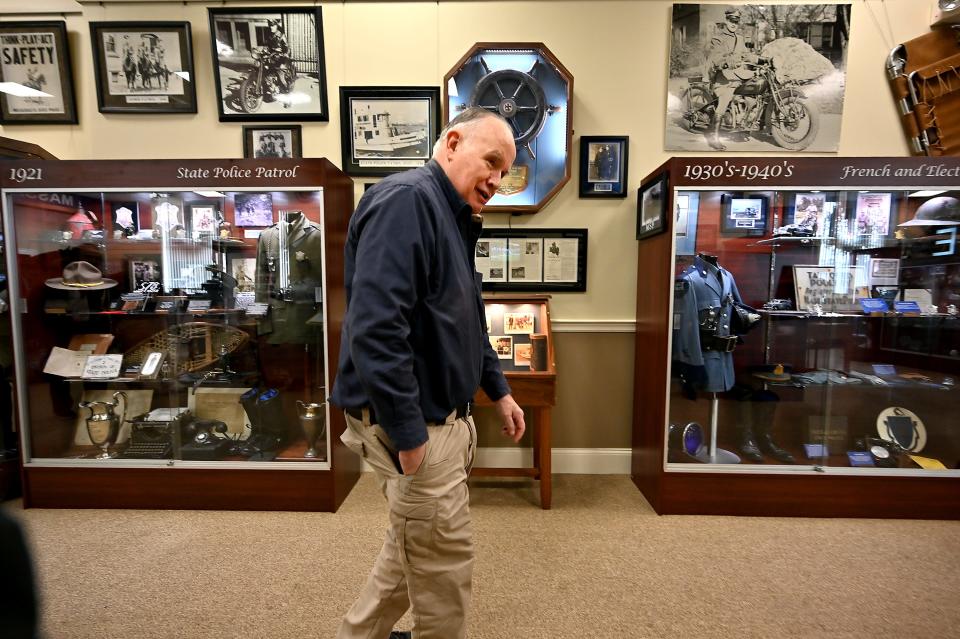
Also displayed is rudimentary riot gear used in the turbulent 1960s and ‘70s, as well as a vintage Pepper Fog CS-Tear Smoke Generator and a display of Smith & Wesson police revolvers over the years.
In the collection, there are bomb disposal suits, uniforms of the state police air wing, special tactical operations team and other nontraditional uniforms. There are displays of state police weapons.
The museum is filled with interesting state police artifacts including many generations of uniforms, an old state police Teletype machine, a horse saddle on top of a mannequin horse, a working police call box, various badges and medals and several generations of communications equipment including a manual typewriter with a partially completed police log in it and many versions of radar used in traffic enforcement.
There are also newspaper clippings about many famous arrests made by state police dating back to the early years of the agency.
The museum is open from 11 a.m. to 4 p.m. Tuesdays and Saturdays. Cost is $5 and free for children under 16, veterans and members. For information, call (508) 839-0001 or log on to mspmlc.org.
This article originally appeared on Telegram & Gazette: State Police Museum and Learning Center preserves 159 years of history

